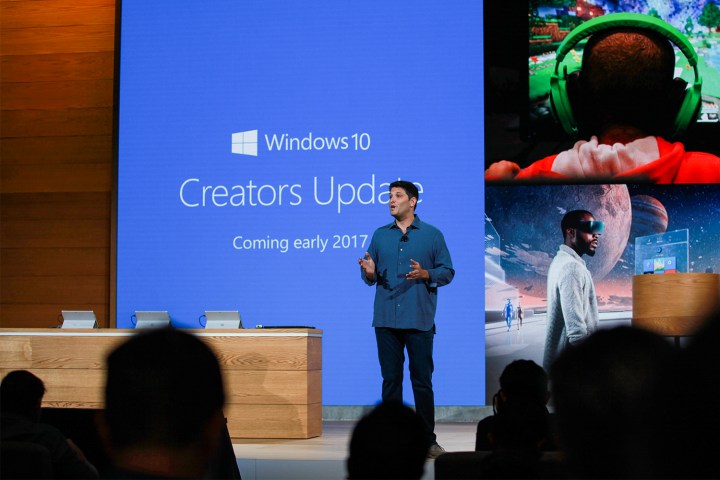
The Windows 10 Creators Update will apparently launch on April 11, 2017, according to a report from MS Power User. The site has corroborated this information with three separate sources that are familiar with Microsoft’s plans.
While plans could change, it seems likely that the Creators Update will indeed make its debut early next month. Microsoft recently held a bug bash to iron out any remaining issues with the new version of Windows 10, so it’s clear that the company has begun the final stages of preparation ahead of its official release.
Before the Creators Update is distributed to the masses, members of the Windows Insider program will get their chance to check out its new features and functionality. It’s expected that Microsoft will sign off on the final version of the update sometime next week, at which point it will be rolled out for Insiders, so they can contribute to some last-minute testing.
If the Creators Update is indeed set to launch on April 11, we can expect an official announcement from Microsoft very soon. The company has been publicizing this update for months, so it’s reasonable to assume that a final push will be on its way before release day.
Once the Creators Update is out in the wild, however, we’ll soon see Microsoft pivot to the year’s second major update to Windows 10, which is currently in development under the code name Redstone 3. That update will apparently be much bigger than the Creators Update, so it’s sure to be a major priority through spring and summer.
Editors' Recommendations
- Windows 11 might nag you about AI requirements soon
- You’re going to hate the latest change to Windows 11
- Windows 11 tips and tricks: 8 hidden settings you need to try
- How to adjust screen resolution in Windows 11 and older
- Windows 11 vs. Windows 10: finally time to upgrade?

